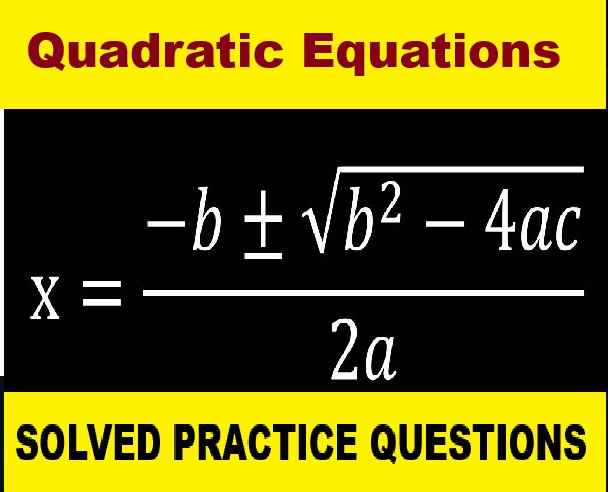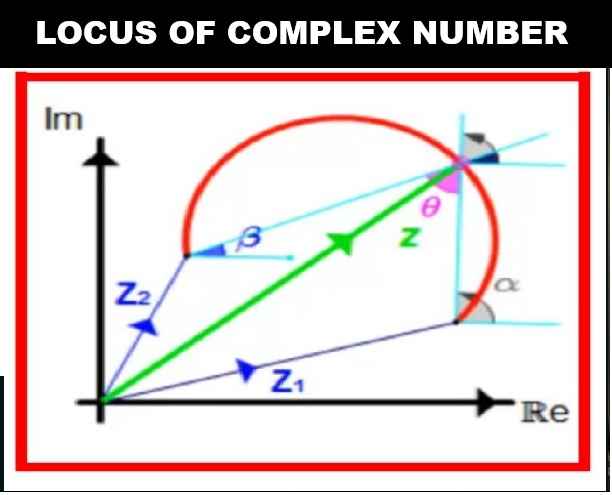Electric Potential and Potential Energy MCQ Type Questions for ISC Class-12 Ch-3 Physics . These MCQ / Objective Type Questions is based on latest reduced syllabus according 2021-22 session on bifurcated pattern. Main motto of MCQ Type Question is cracking the next upcoming exam of council. Visit official website CISCE for detail information about ISC Board Class-12 Physics.
ISC Class-12 Ch-3 Physics Electric Potential and Potential Energy MCQ Type Questions
| Board | ISC |
| Class | 12th (XII) |
| Subject | Physics |
| Chapter-3 | Electric Potential and Potential Energy |
| Syllabus | on bifurcated syllabus (after reduction) |
| Session | 2021-22 |
| Topic | MCQ / Objective Type Question |
Chapter-3 Electric Potential and Potential Energy MCQ Type Questions for ISC Class-12 Physics
Question 1: A positively charged particle is released from rest in an uniform electric field. The electric potential energy of the charge
(a) remains a constant because the electric field is uniform
(b) increases because the charge moves along the electric field
(c) decreases because the charge moves along the electric field
(d) decreases because the charge moves opposite to the electric field
Answer (c) decreases because the charge moves along the electric field
Question 2: Consider the following statements and select the correct statement(s).
I. Electric field lines are always perpendicular to equipotential surface.
II. No two equipotential surfaces can intersect each other.
III. Electric field lines are in the direction of tangent to an equipotential surface.
(a) I only
(b) II only
(c) I and II
(d) I, II and III
Answer (a) I only
Question 3: The electrostatic potential on the surface of a charged conducting sphere is 100V. Two statements are made in this regard S1 at any point inside the sphere, electric intensity is zero. S2 at any point inside the sphere, the electrostatic potential is 100V. Which of the following is a correct statement?
(a) S1 is true but S2 is false
(b) Both S1 and S2 are false
(c) S1 is true, S2 is also true and S1 is the cause of S2
(d) S1 is true, S2 is also true but the statements are independent
Answer (c) S1 is true, S2 is also true and S1 is the cause of S2
Question 4: A positively charged particle is released from rest in an uniform electric field. The electric potential energy of the charge
(a) remains a constant because the electric field is uniform.
(b) increases because the charge moves along the electric field.
(c) decreases because the charge moves along the electric field.
(d) decreases because the charge moves opposite to the electric field.
Answer (c) decreases because the charge moves along the electric field.
Question 5: Equipotentials at a great distance from a collection of charges whose total sum is not zero are approximately [NCERT Exemplar]
(a) spheres
(b) planes
(c) paraboloids
(d) ellipsoids
Answer (a) spheres
Question 6: Two small spheres each carrying a charge q are placed r metre apart. If one of the spheres is taken around the other one in a circular path of radius r, the work done will be equal to
(a) force between them × r
(b) force between them × 2πr
(c) force between them/2πr
(d) zero
Answer (d) zero
Question-7. Consider a uniform electric field in the z-direction. The potential is a constant
(a) for any x for a given z
(b) for any y for a given z
(c) on the x-y plane for a given z
(d) all of these
Ans – (d) all of these
Question 8: A hollow metal sphere of radius 5 cm is charged such that the potential on its surface is 10 V. The potential at a distance of 2 cm from the centre of sphere is:
(a) Zero
(b) 10 V
(c) 5 V
(d) 10/3 V
Answer (b) 10 V
Question 9: Electric potential V due to an electric dipole is related to the distance r of the observation point as:
(a) V ∝ r
(b) V ∝ r-1
(c) V ∝ r²
(d) V ∝ r-2
Answer (d) V ∝ r-2
Question 10: The electric potential V at any point O (x, y, z all in metres) in space is given by V = 4x² volt. The electric field at the point (1 m, 0, 2 m) in volt/metre is
(a) 8 along negative x-axis
(b) 8 along positive x-axis
(c) 16 along negative x-axis
(d) 16 along positive z-axis
Answer (a) 8 along negative x-axis
Question 11: If a unit positive charge is taken from one point to another over an equipotential surface, then
(a) work is done on the charge.
(b) work is done by the charge.
(c) work done is constant.
(d) no work is done.
Answer (d) no work is done.
Question 12: The electrostatic force between the metal plates of an isolated parallel plate capacitor C having a charge Q and area A, is
(a) proportional to the square root of the distance between the plates.
(b) linearly proportional to the distance between the plates.
(c) independent of the distance between the plates.
(d) inversely proportional to the distance between the plates.
Answer (c) independent of the distance between the plates.
Question 13: Equipotential at a great distance from a collection of charges whose total sum is not zero are approximately
(a) spheres
(b) planes
(c) paraboloids
(d) ellipsoids
Answer (a) spheres
Question-14
. Three charges Q, +q and +q are placed at the vertices of an equilateral triangle of side l as shown in the figure. If the net electrostatic energy of the system is zero, then Q is equal to

(a) -q
(b) +q
(c) zero
(d) –
Ans (d) –
Question 15: Choose the correct option
Assertion : Electric potential and electric potential energy are different quantities.
Reason : For a system of positive test charge and point charge electric potential energy = electric potential.
(a) Assertion is correct, reason is correct; reason is a correct explanation for assertion.
(b) Assertion is correct, reason is correct; reason is not a correct explanation for assertion
(c) Assertion is correct, reason is incorrect
(d) Assertion is incorrect, reason is correct.
Answer (c) Assertion is correct, reason is incorrect
Question 16: The electric potential V at any point O (x, y, z all in metres) in space is given by V = 4x² volt. The electric field at the point (1 m, 0, 2 m) in volt/metre is
(a) 8 along negative x-axis
(b) 8 along positive x-axis
(c) 16 along negative x-axis
(d) 16 along positive z-axis
Answer (a) 8 along negative x-axis
Question 17: If a unit positive charge is taken from one point to another over an equipotential surface, then
(a) work is done on the charge.
(b) work is done by the charge.
(c) work done is constant.
(d) no work is done.
Answer (d) no work is done.
Question 18: A conductor with a positive charge
(a) is always at +ve potential.
(b) is always at zero potential.
(c) is always at negative potential.
(d) may be at +ve, zero or -ve potential.
Answer (d) may be at +ve, zero or -ve potential.
Question 19: Which of the following options are correct? If a conductor has a potential V 4- 0 and there are no charges anywhere else outside, then
(a) there must not be charges on the surface or inside itself.
(b) there cannot be any charge in the body of the conductor.
(c) there must be charges only on the surface.
(d) there must be charges inside the surface.
Answer (b) there cannot be any charge in the body of the conductor.
Question 20: Two insulated charged spheres of radii 20 cm and 25 cm respectively and having an equal charge q are connected by a copper wire and then they are separated.
(a) Both spheres will have the same charge q.
(b) Charge on sphere of radius 20 cm will be more than that of radius 25 cm.
(c) Charge on sphere of radius 20 cm will be lesser than that of 25 cm.
(d) Charge on each will be zq.
Answer (c) Charge on sphere of radius 20 cm will be lesser than that of 25 cm.
Question 21: A parallel plate air capacitor is given a charge of 3 µC. A sheet of dielectric constant 3 is inserted so that it completely fills the gap between the plates. The induced charge on each face of the sheet is numerically:
(a) 2 µC
(b) 3 µC
(c) 0
(d) 9 µC
Answer (a) 2 µC
Question-15. The radii of two metallic spheres A and B are r1 and r2 respectively (r1 > r2). They are connected by a thin wire and the system is given a certain charge. The charge will be greater
(a) on the surface of the sphere B.
(b) on the surface of the sphere A.
(c) equal on both.
(d) zero on both.
Ans-(b) on the surface of the sphere A.
Question 23: 64 drops each having the capacity C and potential V are combined to form a big drop. If the charge on the small drop is q, then the charge on the big drop will be
(a) 2q
(b) 4q
(c) 16q
(d) 64q
Answer (d) 64q
Question 24: The radii of two metallic spheres A and B are r1 and r2 respectively (r1 > r2). They are connected by a thin wire and the system is given a certain charge. The charge will be greater
(a) on the surface of the sphere B.
(b) on the surface of the sphere A.
(c) equal on both.
(d) zero on both.
Answer (b) on the surface of the sphere A.
Q-25. A hollow metal sphere of radius 5 cm is charged so that the potential on its surface is 10 V. The potential at the centre of the sphere is
(a) 0 V
(b) 10 V
(c) Same as at point 5 cm away from the surface
(d) Same as at point 25 cm away from the surface
Ans-(b) 10 V
Q-26. A conductor with a positive charge
(a) is always at +ve potential.
(b) is always at zero potential.
(c) is always at negative potential.
(d) may be at +ve, zero or -ve potential.
Ans-(d) may be at +ve, zero or -ve potential.
Q-27
v Figure shows the electric lines of force emerging from a charged body. If the electric field at A and B are EA and EB respectively and if the displacement between A and B is r then

(a) EA > EB
(b) EA < EB
(c) EA = EB/r
(d) EA = EB /r²
Ans-(a) EA > EB
Question 28: Which of the following statement is true?
(a) Electrostatic force is a conservative force.
(b) Potential at a point is the work done per unit charge in bringing a charge from any point to infinity.
(c) Electrostatic force is non-conservative
(d) Potential is the product of charge and work.
Answer (a) Electrostatic force is a conservative force.
Question 29: The resistivity of alloy manganic is
(a) Nearly independent of temperature
(b) Increases rapidly with increase in temperature
(c) Decreases with increase in temperature
(d) Increases rapidly with decrease in temperature
Answer (a) Nearly independent of temperature
Question 30: A long, hollow conducting cylinder is kept coaxially inside another long, hollow conducting cylinder of larger radius. Both the cylinders are initially electrically neutral
(a) A potential difference appears between the two cylinders when a charge density is given to the inner cylinder.
(b) A potential difference appears between two cylinders when a charge density is given to the outer cylinder.
(c) No potential difference appears between the two cylinders when a uniform line charge is kept along the axis of the cylinders.
(d) No potential difference appears between the two cylinders when same charge density is given to both the cylinders.
Answer (a) A potential difference appears between the two cylinders when a charge density is given to the inner cylinder.
Question 31: The electrostatic force between the metal plates of an isolated parallel plate capacitor C having a charge Q and area A, is
(a) independent of the distance between the plates
(b) linearly proportional to the distance between the plates
(c) inversely proportional to the distance between the plates
(d) proportional to the square root of the distance between the plates
Answer (a) independent of the distance between the plates
Question-32 If a unit positive charge is taken from one point to another over an equipotential surface, then
(a) work is done on the charge.
(b) work is done by the charge.
(c) work done is constant.
(d) no work is done.
Ans-(d) no work is done.
Question 33: Consider a uniform electric field in the z-direction. The potential is a constant\
(a) for any x for a given z
(b) for any y for a given z
(c) on the x-y plane for a given z
(d) all of these
Answer (d) all of these
Question 34: Equipotential surfaces
(a) are closer in regions of large electric fields compared to regions of lower electric fields.
(b) will be more crowded near sharp edges of a conductor.
(c) will always be equally spaced.
(d) both (a) and (b) are correct.
Answer (d) both (a) and (b) are correct.
Question 35: A test charge is moved from lower potential point to a higher potential point. The potential energy of test charge will
(a) remain the same
(b) increase
(c) decrease
(d) become zero
Answer (c) decrease
Que-36 . In a region of constant potential
(a) the electric field is uniform.
(b) the electric field is zero.
(c) there can be no charge inside the region.
(d) both (b) and (c) are correct.
Ans- (d) both (b) and (c) are correct.
Que-37. An electric dipole of moment 𝑝⃗ is placed in a uniform electric field 𝐸⃗ . Then
(i) the torque on the dipole is 𝑝⃗ ×E→
(ii) the potential energy of the system is 𝑝⃗ .E→
(iii) the resultant force on the dipole is zero. Choose the correct option.
(a) (i), (ii) and (iii) are correct
(b) (i) and (iii) are correct and (ii) is wrong
(c) only (i) is correct
(d) (i) and (ii) are correct and (iii) is wrong
Ans(b) (i) and (iii) are correct and (ii) is wrong
Que-38. Which of the following statements is false for a perfect conductor?
(a) The surface of the conductor is an equipoten-tial surface.
(b) The electric field just outside the surface of a conductor is perpendicular to the surface.
(c) The charge carried by a conductor is always uniformly distributed over the surface of the conductor.
(d) None of these
Ans-(d) None of these
Question 39: ABC is a right angled ∆ with AB = 3 cm, BC = 4 cm, AB = 5 cm. Charges of +15 stat. C, -12 and 20 stat Coulomb are placed at A, B, C respectively. The electric potential energy of three charges is:
(a) 180 ergs
(b) 4 × 5 × 3 erg
(c) – 60 ergs
(d) (20 + 15 – 12) ergs.
Answer (c) – 60 ergs
Question 40 Consider a uniform electric field in the z-direction. The potential is a constant
(a) for any x for a given z
(b) for any y for a given z
(c) on the x-y plane for a given z
(d) all of these
(Ans–d) all of these
Question 41: It becomes possible to define potential at a point in an electric field because electric field
(a) is a conservative field
(b) is a non-conservative field
(c) is a vector field
(d) obeys principle of superposition
Answer (a) is a conservative field
Question 42: In a region of constant potential
(a) the electric field is uniform
(b) the electric field is zero
(c) the electric field shall necessarily change if a charge is placed outside the region
(d) None of these
Answer (b) the electric field is zero
Question 43: Which of the following about potential at a point due to a given point charge is true ? The potential at a point P due to a given point charge
(a) is a function of distance from the point charge.
(b) varies inversely as the square of distance from the point charge.
(c) is a vector quantity
(d) is directly proportional to the square of distance from the point charge.
Answer (a) is a function of distance from the point charge.
Question 44: An equipotential surface is that surface
(a) on which each and every point has the same potential
(b) which has negative potential
(c) which has positive potential
(d) which has zero potential
Answer (a) is a function of distance from the point charge.
-: also visit :-
ISC Class-12 Text book Solutions, Notes , Syllabus, Paper, Notes
Please share with your ISC friends if it is helpful
Thanks



It was really helpful for us
now focus on sem-2 descriptive question of which specimen paper has been uploaded